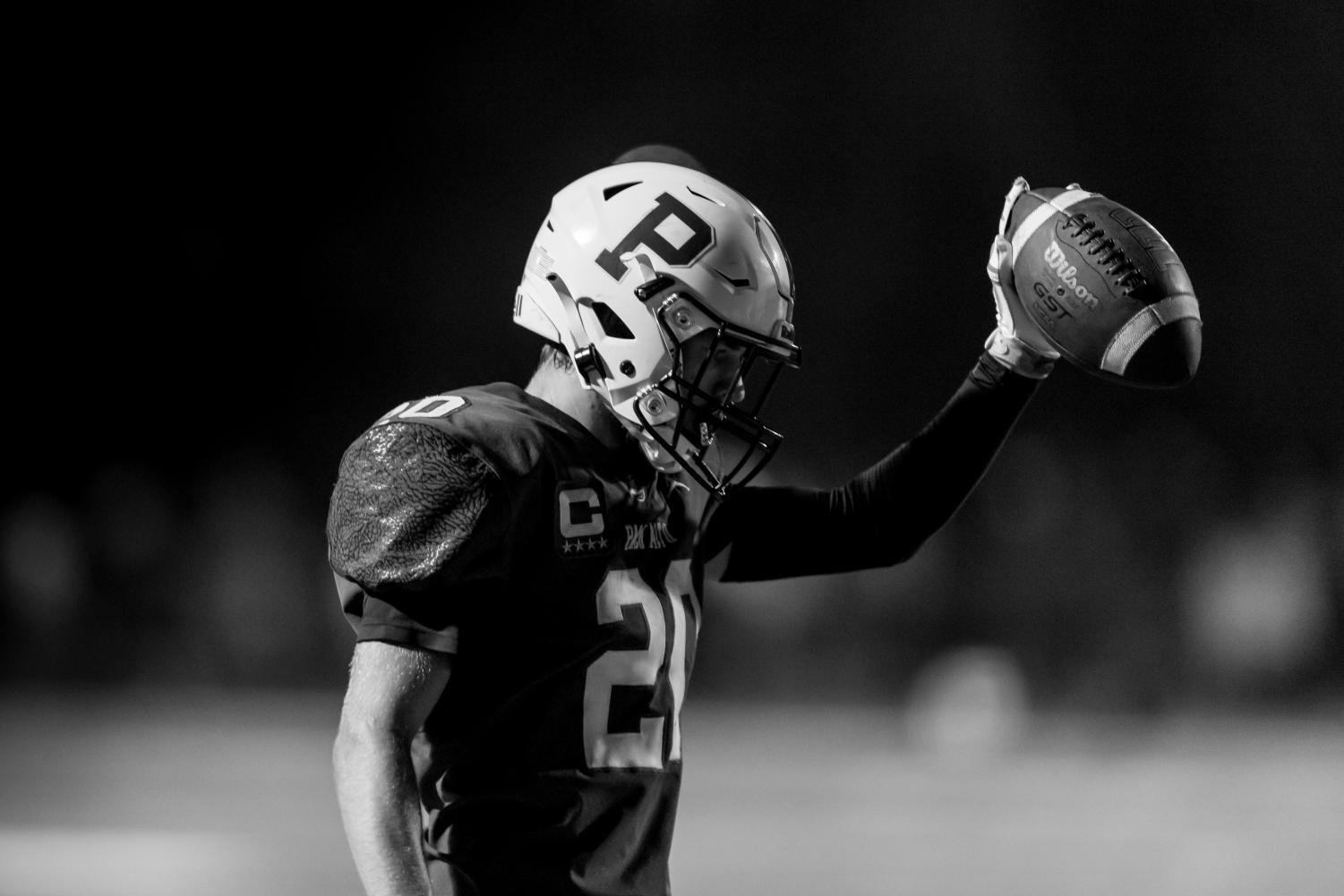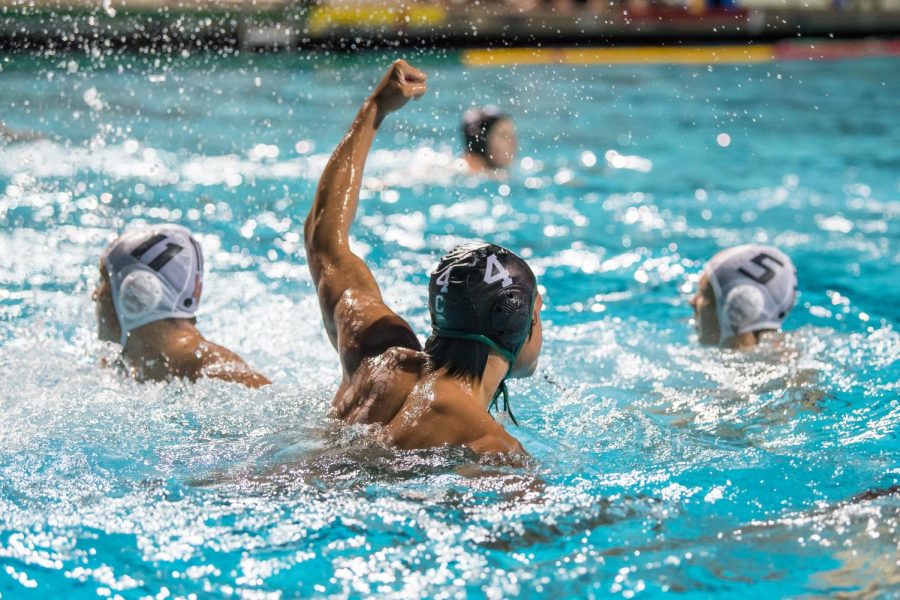Through the Lens
December 9, 2021
The cacophony of the crowded stadium and stands roar in their ears as they feel the turf and terrain beneath them. They remain focused on the target, using their hands, eyes, and instinct. They crouch, always ready for the next shot. But not in the sense of a soccer ball into the goal or a window for a quarterback to throw a pass; instead, the shot of a picture, capturing a split-second play; a moment in time that will last for eternity.
This is the mission of a sports photographer. They are often at the forefront of the action, wielding their expertise, cameras, and lenses, to capture quick single-handed catches and emotion-filled celebrations to distill into a visual story. Ranging from experienced professional photographers like Karen Hickey and Celeste Bates to recreational amateur photographers like Malcolm Slaney, each one implements their own unique techniques to achieve compelling, powerful photos. From telling the stories of Paly athletes to capturing the passion of the game, every picture these photographers compose serves a purpose.
When looking at the Instagram posts of Paly athletes, photos of their catches, kicks, and saves are proudly displayed for all their followers to see. Thanks to Karen Hickey, a well-respected sports photographer among the Paly community, her photographic expertise makes it possible for students to showcase their athletic accomplishments and skill to family and friends.
Hickey has been photographing Paly sports since her son David attended Paly and has continued to do so even after her daughter Jenna graduated last year. But she is more than just a photographer for her children: she’s known for generously donating her time as a photographer for all Paly teams. As her children have grown up, Hickey has also watched Paly and its athletes grow and evolve through her lens.
“I love it,” she said. “These are families I’ve grown up with. These are kids I’ve known forever.”
Hickey recalls the way art had always existed around her; from her sisters who majored in fine arts to her dad who developed film for her. In addition to art, sports have also been an integral part of Hickey’s life; she was a multi-sport athlete in high school and went on to play softball in college.
Hickey’s kids took after her interest in sports. As she watched them run around playing soccer, Hickey noticed that trying to capture them in photos was no easy feat. Often, the photos of her kids in action were too zoomed in, or blurry and hard to see. Hickey wanted to be able to have great photos of her kids playing sports for memories, and became determined to accomplish this task herself.
When Hickey heard about a sports photography class offered as part of Stanford Continuing Ed, she signed up. Here, she learned five tips to make her photos better, which she applied by photographing sports, from the elite collegiate level at Stanford to her children’s recreational games.
“It was incredible,” she said. “I took [the class], and then kept working on what I was doing…as [the kids] went through school and all their sports, I took photos of everything. And I just worked on getting better.’’
She is now a regular photographer for Stanford sports, and she has extended her expertise to Paly.
When photographing sporting events, Hickey goes into every game with a vision for what she wants to capture.
“I have a list of what I want to take photos of,” Hickey said. “I want to take a photo of the quarterback. I want to take a photo of the pitcher, of the star shortstop, of the setter on volleyball.”
Fulfilling this list is vital to Hickey. Not only does she try to capture each games’ key players, but she makes an effort to get a photo of everybody.
“If I haven’t gotten [a specific picture] yet, I’ll wait until I get it, because I don’t want to go home without it.”
Hickey recommends all aspiring sports photographers to create their own checklist before going to games. This allows photographers to be more intentional with their shots and consider what story they want to convey, something she executes each game.
“There’s more than just the ball in the goal…there’s a story behind it,” she said.
Capturing the story is the ultimate goal for Hickey. It shines through in the photos she shares with Paly athletes and their families as well as in her contribution of game photos to the Palo Alto Weekly.
“I try to come up with 20 to 30 photos that tell a story,” she said. “Where was it, the big picture, what happened…the good, the bad, all of that.”
Despite both her kids now being graduated, Hickey continues to attend sports games, setting up her equipment and crouching as she attempts to capture the best possible shots. She often comes to games on her own time and provides photos for free, simply out of her love of sports photography and the Paly community.
And her love does not go unnoticed. The Hickey name remains a familiar and appreciated one among players and parents as they come and go through the years. Students will often see Hickey around campus before or after games, greeting her with smiles.
“It’s the kids coming out of their element to come over and say hi [that] makes my day,” Hickey said.
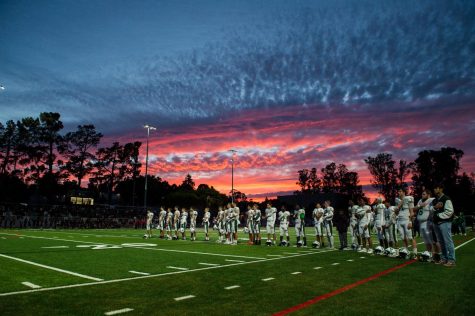
One of Hickey’s favorite moments from her photography career was in 2018, where her shot of the Paly Football team during the national anthem with the sunset in the background, won an Editor’s Choice Award from National Geographic magazine.
“The team gave me that photo, framed, with all their signatures and messages as a gift at the end of the year,” she said. “I [still] have it up on my wall.”
Just as she continues to be a part of the Paly community, students and athletes alike continue to look forward to her presence at their games.
“As long as kids don’t mind…I still try to go to some games,” she said. “Some kids text and ask me to come to their games. I feel like I’m not quite done.”
Another photographer is Celeste Bates, who has been surrounded by photographers from a young age. Photography ran in her family; her grandfather and her mother both were photographers and she became a third generation photographer.
“When I was little, I used to come home from school and I would walk into my mom’s darkroom and just hang out with her in there while she was developing pictures,” Bates said.
She started off with portraiture and photographed everything from Christmas cards to baby portraits. While she continued to take these photos for ten years, she eventually got bored with it.
After taking a break to take care of her children, Bates started to explore the realm of sports photography by helping the Hickeys take photos for the baseball team. As she continued to photograph and expand her expertise over new sports, her excitement and drive for sports photography grew. What started off as a favor quickly turned into a passion.
“I think [sports photography is] just honest…[because] the photo tells everything,” Bates said. “I mean, they say a picture’s worth 1000 words.”
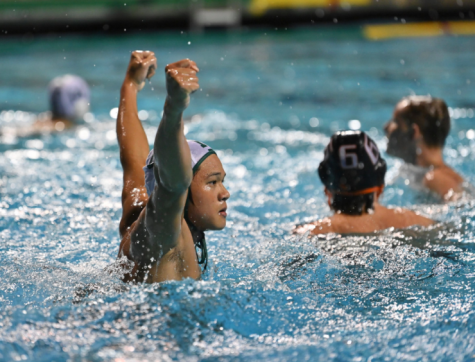
Since the new school year and fall season has started, she has further explored more sports such as field hockey, football, water polo, and volleyball. With each sport, there are different camera settings and skills necessary, which makes certain sports harder to capture compared to others.
“I think the one that’s the hardest for me technically is water polo,” Bates says. “The games are at night and there are so many shadows and reflections. The cameras tend to focus on the water instead of the player and they’re moving so fast.”
As she continues to gain more experience in taking photos for Paly sports, she has learned what the most important parts of sports photography are.
She stresses the importance of raw emotions in sports photography. Whether it be pure ecstasy from shooting the final goal, or disappointment after missing a shot, Bates strongly believes that these passionate photos are the best for sports photography.
“It’s one thing to capture the goal or the home run or the score, [but] catching the face when they make it or don’t make it, those are the money shots,” Bates says.
Despite the challenge and focus needed to take quality sports photos, the learning experience has been very enjoyable for her.
“It’s just so much fun,” she says. “You’re out there and you get to be out there at night, with the team.”
Malcolm Slaney agrees with Bates, and the shared understanding between sports photographers and the importance of raw emotions. Despite his skillfully-shot running photos, Slaney is a self-proclaimed “amateur” photographer. Similar to Hickey and Bates, Slaney loves the stories and individualism that capturing the faces in photographs leads to.
“Taking pictures of the back of runners as they go by doesn’t do much,” Slaney said. “That’s why I like the faces; that’s why we get the eyes open.”
This driving desire for “the face”—along with strong ties to the community—form the root of Slaney’s enduring career in running photography, both for cross country in the fall and track and field in the spring.
“I think I shot one football game just to see what it was like, but there’s not enough light and you can’t see the faces,” Slaney said. “I also did some water polo for my niece, but I don’t feel the same allegiance. I liked the runners. I want to be part of that community.”
However, ironically, as an adolescent, Slaney took pictures of basically everything except runners.
“I was a photographer in high school, for both the newspaper and the yearbook,” Slaney said. “I shot for basketball and I did a little bit of football, but I never did any cross-country or track.”
Everything changed when his son Kent, a former Paly and MIT grad, started running in elementary school.
“When Kent started running, I started following him,” Slaney said. “Then I was taking pictures of all his meets, and I’ve been doing it since he was in third grade.”
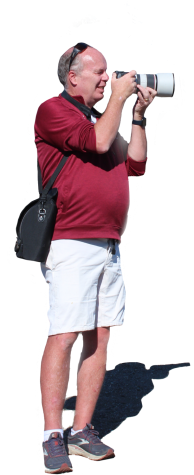 As Kent continued to run at Paly, Slaney stepped into the role of team photographer and has continued to do so today, even after his son graduated in 2017. Even more impressive is that Slaney aims to take pictures of every single runner at every single meet, even if they are not on Paly. His photos, along with his generous heart, transcend school boundaries and blur the lines between competitors.
As Kent continued to run at Paly, Slaney stepped into the role of team photographer and has continued to do so today, even after his son graduated in 2017. Even more impressive is that Slaney aims to take pictures of every single runner at every single meet, even if they are not on Paly. His photos, along with his generous heart, transcend school boundaries and blur the lines between competitors.
“[Taking pictures is] my way of paying back the [running] community, because it was really good for Kent in lots of ways,” Slaney said. “Everybody was; the kids, the coaches, and the parents. I can’t coach, so this is my way of paying back.”
And “pay back,” he does. Slaney takes an average of 5,000 pictures a meet, spending over twelve hours editing and uploading them.
“I shoot for five hours, so like 5,000 pictures, and the first time I just have to go through really fast and get rid of the stuff that I can’t use, keeping around 10-15%,” Slaney said. “Then I color correct and crop each picture individually.”
The burning question is, why?
“I’m doing it for the kids, because, hopefully, I will make some people smile and keep them running,” Slaney said. “[Through taking pictures], I’m next to the winners, whether they run fast or slow. I get to encourage them and offer good wishes, something I’m willing and happy to do.”
Slaney’s pure-hearted message symbolizes the importance, emotions, and storytelling of photography. These ideas were what spurred Slaney to take pictures, and the community is what continues to motivate him
Keith Peters, former sports photographer and editor for the Palo Alto Weekly, echoes these themes of emotions, story, and community connections that photography can establish.
“A great sports photo can stand alone, and if you can get a photo that really tells the story, you’ve done your job,” Peters said. “That’s why I always looked for emotion—like an individual or a team celebrating.”
Peters started at the Palo Alto Weekly as sports editor in 1993. Then, in 1995 he became its main sports photographer and continued with both of these positions until his retirement in 2016. As sports editor he chose pictures, typically his own, based on specific aesthetics.
“I always looked for a photo that could be the main, front-page sports photo for each print issue,” Peters said. “Since I was also writing the story for the event I was shooting, I made sure to take photos of those athletes whom I would feature in the story. The photos need to illustrate the story.”
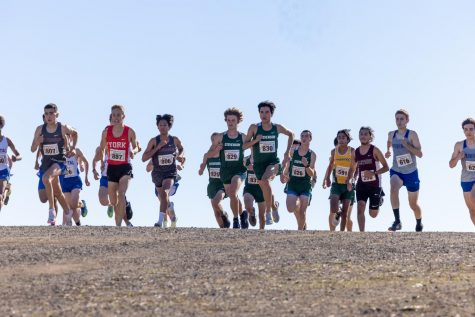
This ties back to the recurring idea of a photo, despite being unmoving, speaking for itself. This theme has resounded throughout the reasons behind photographers continuing to shoot. Hickey described telling every player’s story through photos, not always just the star players. Bates depicted the emotionality of a single photo and how important they are in making an evocative photo. And Slaney discussed the importance of the story behind his photos and its ties to the community. The power a single frame can have, is echoed in their love and purpose for it.
Peters succinctly sums up the endurance of sports photography: why it will never disappear, despite the increasing popularity of sports videos on television, TikTok, and Instagram. He highlights why there will always be people who put their hearts and souls, and not to mention hours of their life, as Hickey, Bates, and Slaney do, to capture a single, quick moment in time.
“A picture is worth a thousand words,” Peters said. “Having that one special [picture] of your son or daughter hanging on the wall beats having a video any day.”

